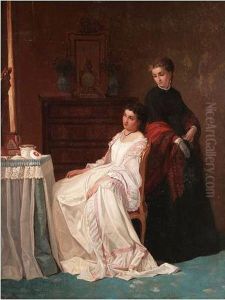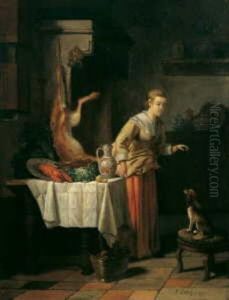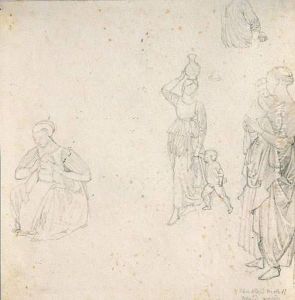Victor Emile Janssens Paintings
Victor Emile Janssens was a Flemish painter who made a significant impact in the world of Baroque art during the late 17th and early 18th centuries. Born in 1658 in Brussels, then part of the Spanish Netherlands, Janssens was deeply influenced by the prevailing Baroque aesthetic, which was characterized by drama, rich coloration, and intense light and shadow contrasts. His works, primarily religious and mythological scenes, reflect the grandeur and dynamism that define the Baroque movement.
Janssens received his early training in Brussels, a city known for its vibrant artistic community. He likely studied under prominent local painters, which allowed him to develop a keen understanding of color, composition, and the human form. As he matured as an artist, Janssens began to incorporate elements of the Italian Baroque style into his work, a testament to the influence of his likely travels or exposure to Italian art through engravings and the presence of Italian works in the Low Countries.
Throughout his career, Janssens enjoyed patronage from the church and the nobility, who sought his skills for religious compositions, portraits, and allegorical scenes. His ability to imbue his subjects with a sense of divine presence and emotional depth made his works particularly appealing for altarpieces and private devotions. Despite the high demand for his paintings, detailed records of his commissions and their locations are scarce, making it challenging to fully assess his oeuvre.
Victor Emile Janssens passed away in 1736, leaving behind a legacy that, while not as widely recognized today as some of his contemporaries, contributed significantly to the richness of the Baroque tradition in the Flemish regions. His works, though less frequently encountered, continue to be appreciated for their technical skill and emotional intensity, emblematic of the era's artistic aspirations.


